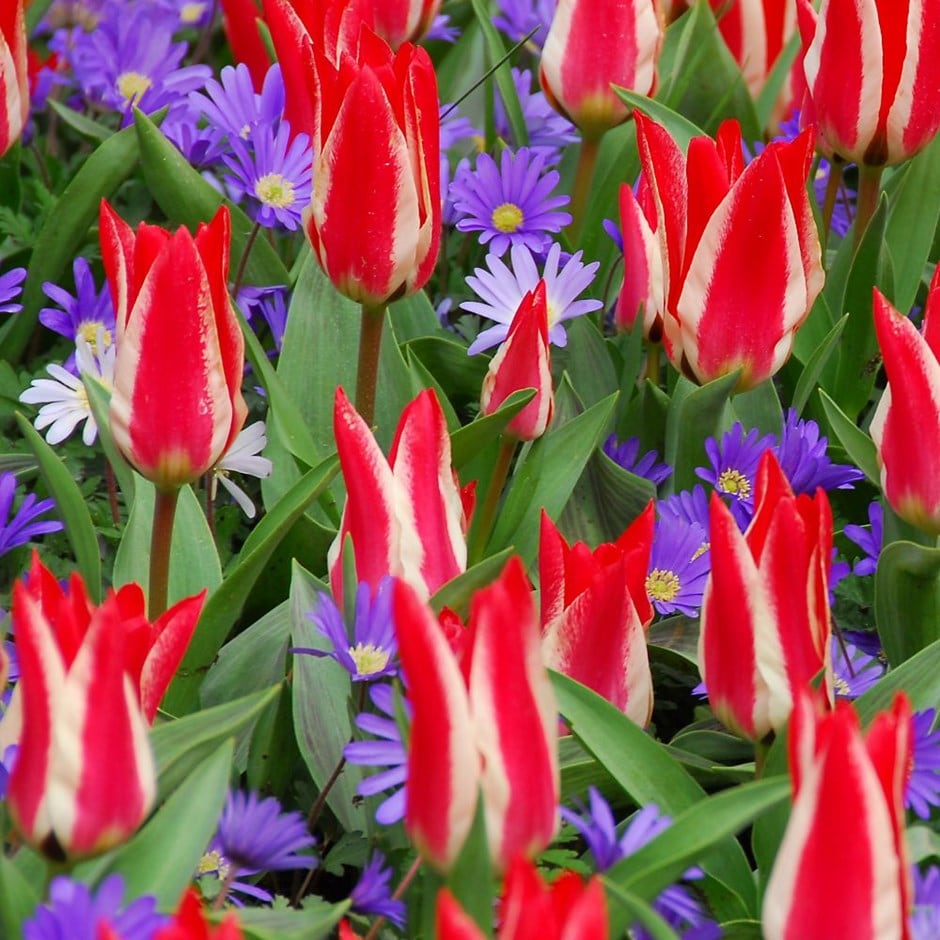Tulipa 'Pinocchio'
greigii tulip bulbs
This bulb dies back after flowering each year and enters a period of rest ahead of regrowth the following season.
- Position: full sun
- Soil: moderately fertile, moist but well-drained soil, or general purpose compost for containers
- Rate of growth: average
- Flowering period: March to April
- Hardiness: fully hardy
- Bulb size: 10/11
This showy little tulip is easy to grow, and unlike many of the other forms, it can be naturalised in grass where it will slowly spread to form swathes of vibrant spring colour. Diminutive in stature, it also looks great in smaller spaces - even windowboxes or pots on a sunny patio or balcony.
These species tulips are adaptable for pot and border culture, as well as naturalising in meadows and wildflower schemes. Using fresh, good-quality compost, plant bulbs in pots from September to November. For borders, these tulips have some resistance to Tulip Fire and can be planted earlier in the autumn than other species, though a later planting after the first frosts (October) will reduce any risk. Plant bulbs 15-20cm (6-8in) deep and 10-15cm (4-6in) apart in fertile, well-drained soil. Alternatively, allow 7-9 bulbs per 30cm sq or 60-75 bulbs per m². If you’re unable to plant your bulbs immediately, they can be stored in a cool environment with good air circulation. Remove all the packaging and place them in a loose-weave jute sack before labelling and hanging up in a dry, unheated garden shed or well-ventilated greenhouse.
In spring, when the potted or border tulips are in active growth, apply a high-potash fertiliser (like Tomorite) each week until the leaves start to die back. Pinch off the spent flower heads as the petals fall, and let the stem and foliage die back naturally. Unlike border/bedding tulips, species tulips tulips can be left in the ground to flower in situ year after year.
If planting in a meadow in order to naturalise, make sure the grass is not cut until the foliage has completely died back.
In spring, when the potted or border tulips are in active growth, apply a high-potash fertiliser (like Tomorite) each week until the leaves start to die back. Pinch off the spent flower heads as the petals fall, and let the stem and foliage die back naturally. Unlike border/bedding tulips, species tulips tulips can be left in the ground to flower in situ year after year.
If planting in a meadow in order to naturalise, make sure the grass is not cut until the foliage has completely died back.
- Humans: Harmful if eaten; skin allergen; Pets: Ornamental bulbs - not to be eaten

